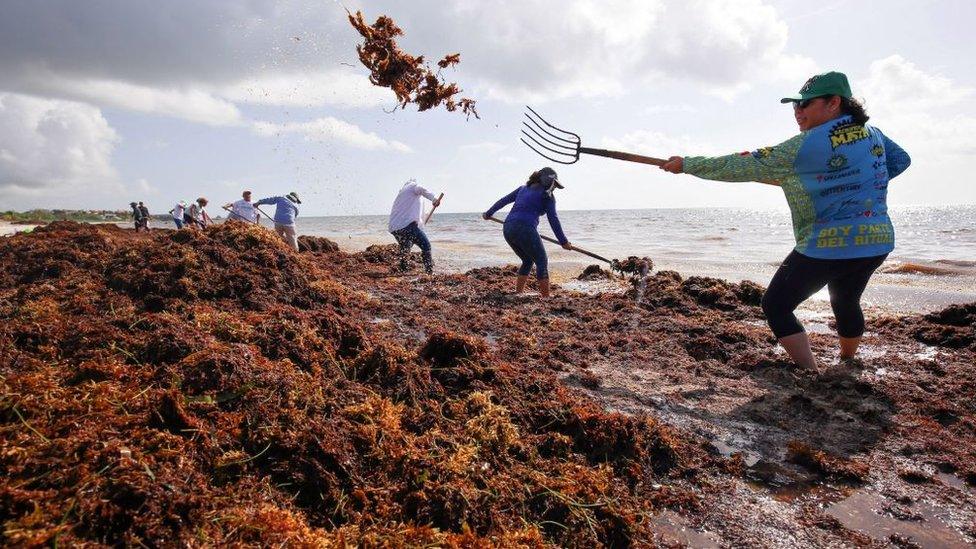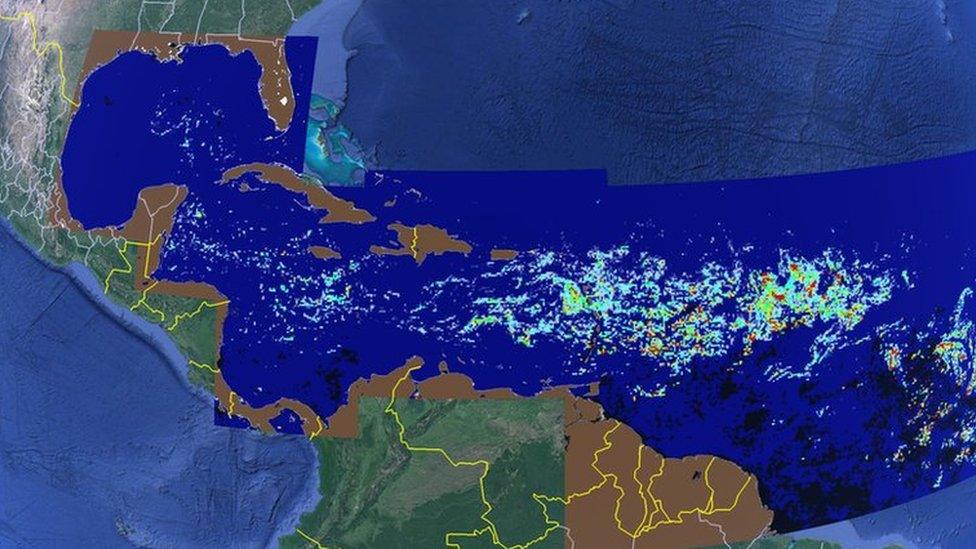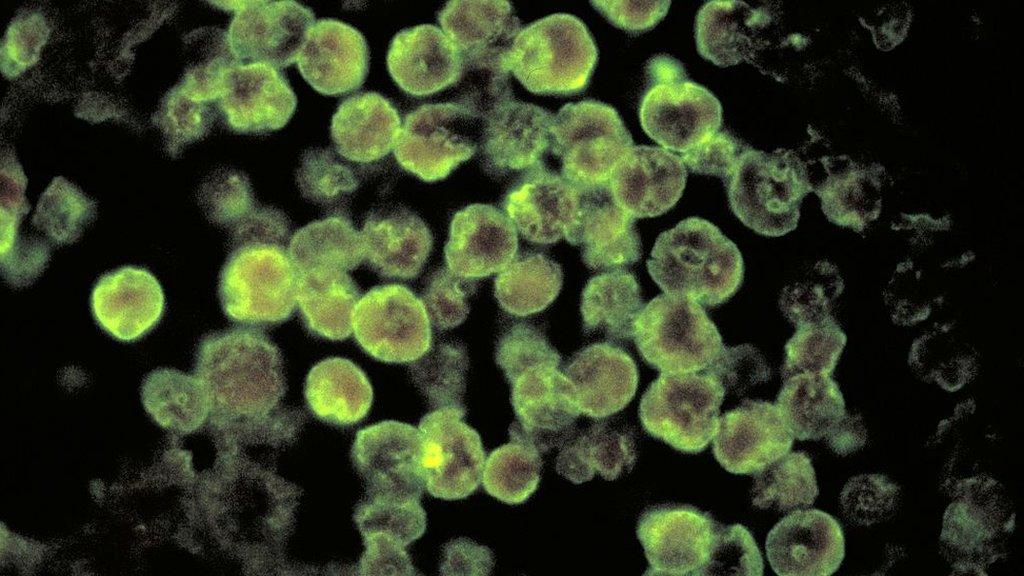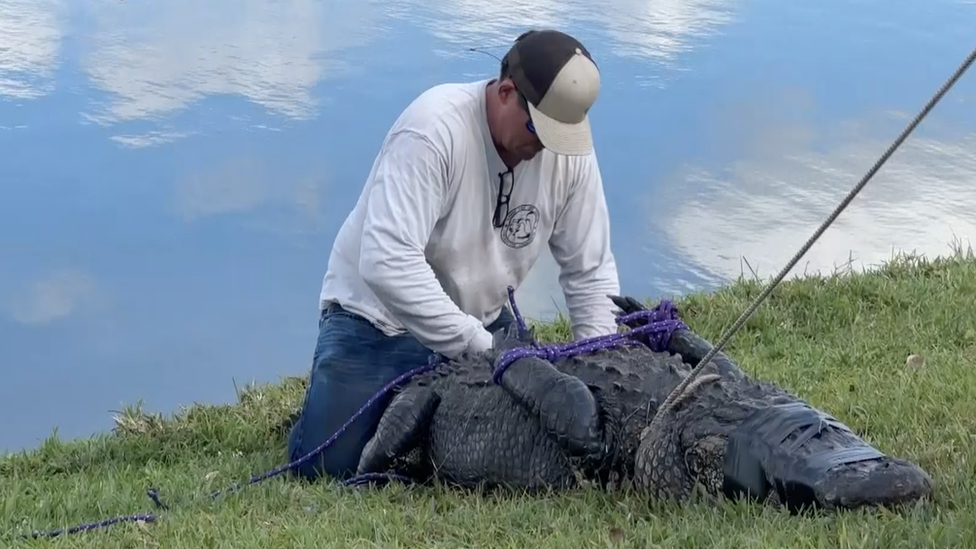Stinky seaweed bloom wider than US heads for Florida
- Published

Florida beaches may soon be overrun by massive patches of foul-smelling seaweed.
It is the Atlantic sargassum belt, and while not new, it has been growing bigger than ever.
This year's belt is about 5,500 miles (8,800km) long and weighs 10 million tons. It travels throughout the year, from West Africa to the Gulf of Mexico.
The sargassum is so large that the only way to see the entire belt is from space.
This summer, it is expected to stink up beaches all over the Sunshine state.
Key West, Florida, is already seeing some of the seaweed. Beach-goers can expect larger sargassum flows to come ashore more often, experts say.
"Pretty much every year we're seeing a bloom that's unlike anything we've ever seen before, because it's just getting bigger and bigger," University of South Florida's Dr Brian Barnes told BBC News.
Sargassum is a "brown macroalgae floating on the ocean surface", according to the University of South Florida Optical Oceanography Laboratory.
Though the sargassum is one bloom, it is not one "contiguous mass", Dr Barnes explains.
The smallest amount of a sargassum patch might be the size of a football field, but larger ones can reach up to a square mile (2.5 sq km).
In the North Atlantic, sargassum is an important habitat for marine life, but after 48 hours on shore the seaweed starts to emit toxins like hydrogen sulphide which, in low amounts, smell like rotten eggs.
Environmentally speaking, the sargassum "can smother sea turtle nests on the beach" and release "plumes of dissolved organic matter, which can impact near shore environments and their inhabitants", Dr Barnes said.
Worse than the smell, though, hydrogen sulphide can cause headaches, eye irritation and upset stomachs depending on the amount, according to the Centers for Disease Control and Prevention.
"Florida Keys county and municipal officials say they are ready to remove sargassum from public beaches, if needed. Both Monroe County and the City of Key West have sargassum removal procedures in place and will be prepared to ramp up these efforts," said Andy Newman, spokesman for the Florida Keys tourism council.
The seaweed has not majorly disrupted tourism levels in the past, but officials will monitor the sargassum as the season goes on.
Mr Newman added that hotels typically employ their own staff or contractors to deal with sargassum removal.

Satellite imaging shows the scale of the seaweed belt
The exact reason for the sargassum growth is still being studied.
Dr Chuanmin Hu, professor at the University of South Florida, said the seaweed needs "enough sun light, warm water, and sufficient nutrients from different sources" to grow fast. He said the "elongated belt is formed because of the ocean currents and surface winds".
One contributing factor, Dr Barnes said, could be from the Amazon watershed, which has seen an increase in nitrogen that then fertilises the sargassum.
Many Caribbean islands and the Yucatan Peninsula are also affected.
Last month, Cancun saw "excessive, external" levels of the seaweed, and Mexico's Navy previously joined the seaweed fight, sending boats to fish it out of waters before it could reach beaches.
The US Virgin Islands even had to declare a state of emergency because of the seaweed last year.
Guadeloupe and Martinique saw thousands of cases of "acute" exposure to hydrogen sulphide, according to a study published in 2018.
Related topics
- Published7 March 2023

- Published2 March 2023

- Published21 February 2023
